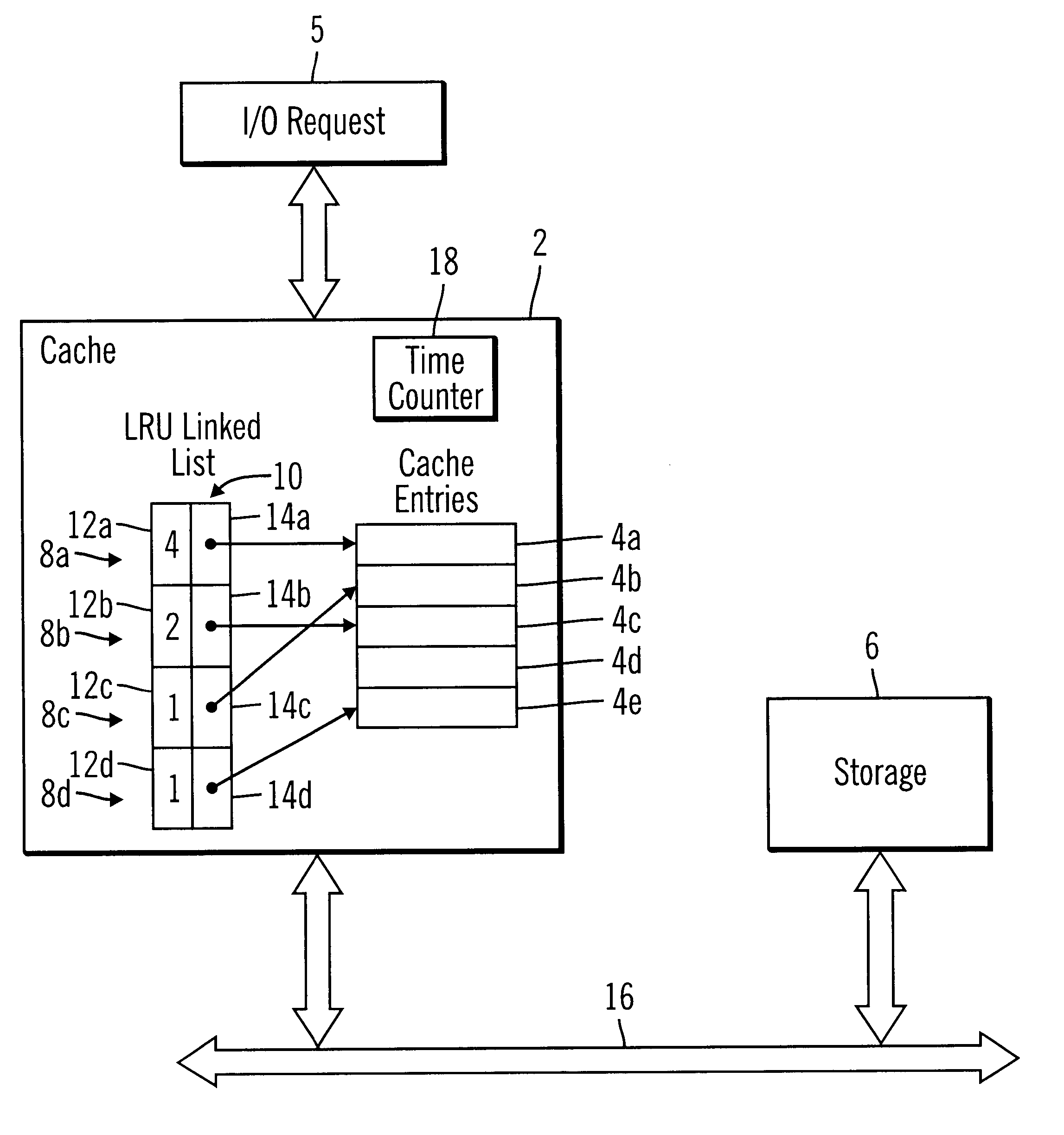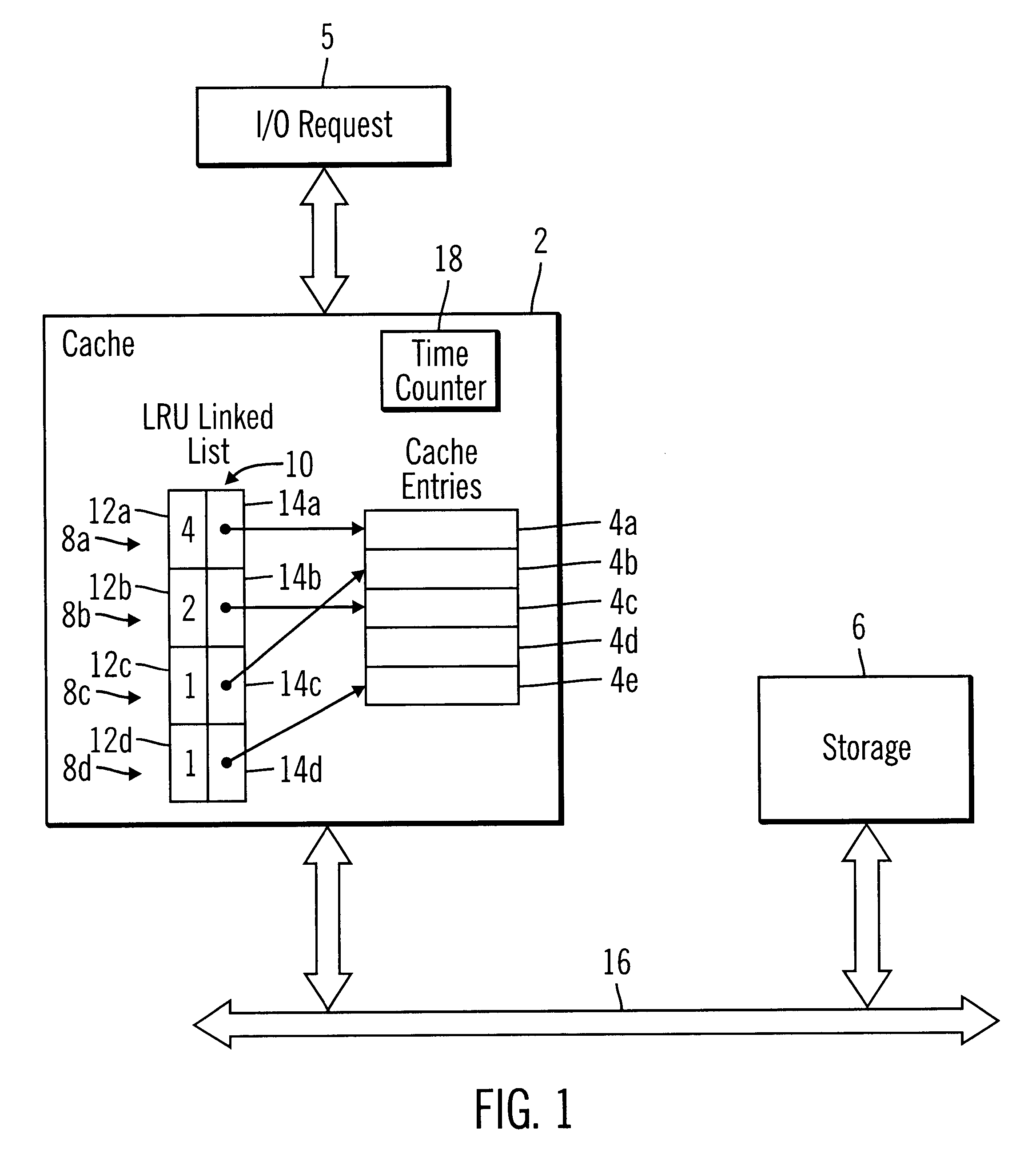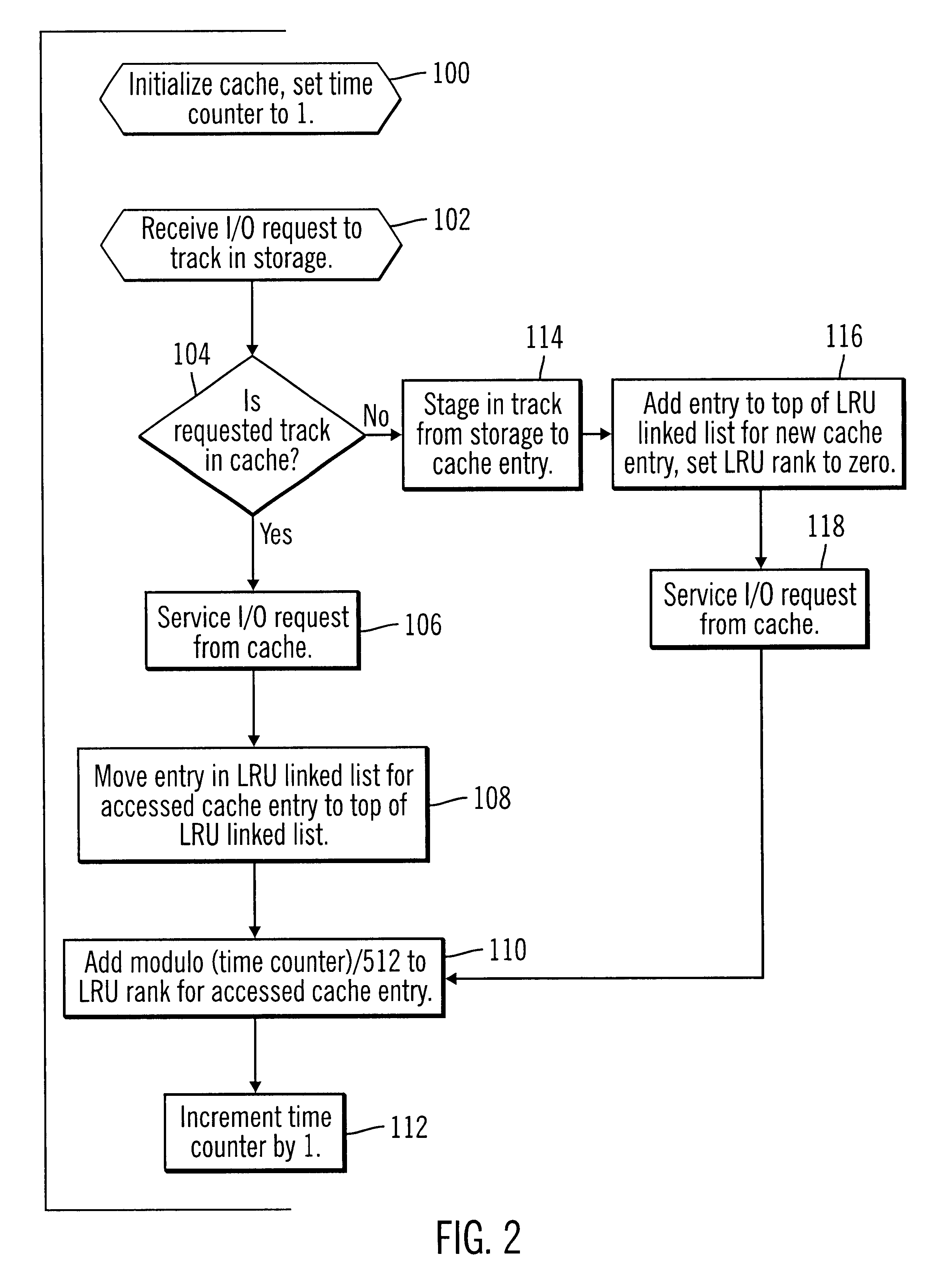Method, system, and program for demoting data from cache based on least recently accessed and least frequently accessed data
a data and cache technology, applied in the field of cache data demoting, can solve the problems of not considering the optimal algorithm of random access data, and the inability of the lru algorithm to consider the frequency of access to cache entries
- Summary
- Abstract
- Description
- Claims
- Application Information
AI Technical Summary
Benefits of technology
Problems solved by technology
Method used
Image
Examples
Embodiment Construction
To overcome the limitations in the prior art described above, preferred embodiments disclose a method, system, and program for caching data. Data from a device, such as a volatile memory device or non-volatile storage device, is maintained in entries in a cache. For each entry in cache, a variable indicates both a time when the cache entry was last accessed and a frequency of accesses to the cache entry.
In further embodiments, a determination is made when a number of entries in cache has reached a threshold. In response to reaching the threshold, a determination is made of a plurality of cache entries having a relatively low value for the variable with respect to the value of the variable for other cache entries. A relatively low variable value indicates that the cache entry is one of a least recently accessed entry and / or least frequently accessed entry. Those determined cache entries having the relatively low value for the variable are demoted from cache.
In still further embodimen...
PUM
 Login to View More
Login to View More Abstract
Description
Claims
Application Information
 Login to View More
Login to View More - R&D
- Intellectual Property
- Life Sciences
- Materials
- Tech Scout
- Unparalleled Data Quality
- Higher Quality Content
- 60% Fewer Hallucinations
Browse by: Latest US Patents, China's latest patents, Technical Efficacy Thesaurus, Application Domain, Technology Topic, Popular Technical Reports.
© 2025 PatSnap. All rights reserved.Legal|Privacy policy|Modern Slavery Act Transparency Statement|Sitemap|About US| Contact US: help@patsnap.com



